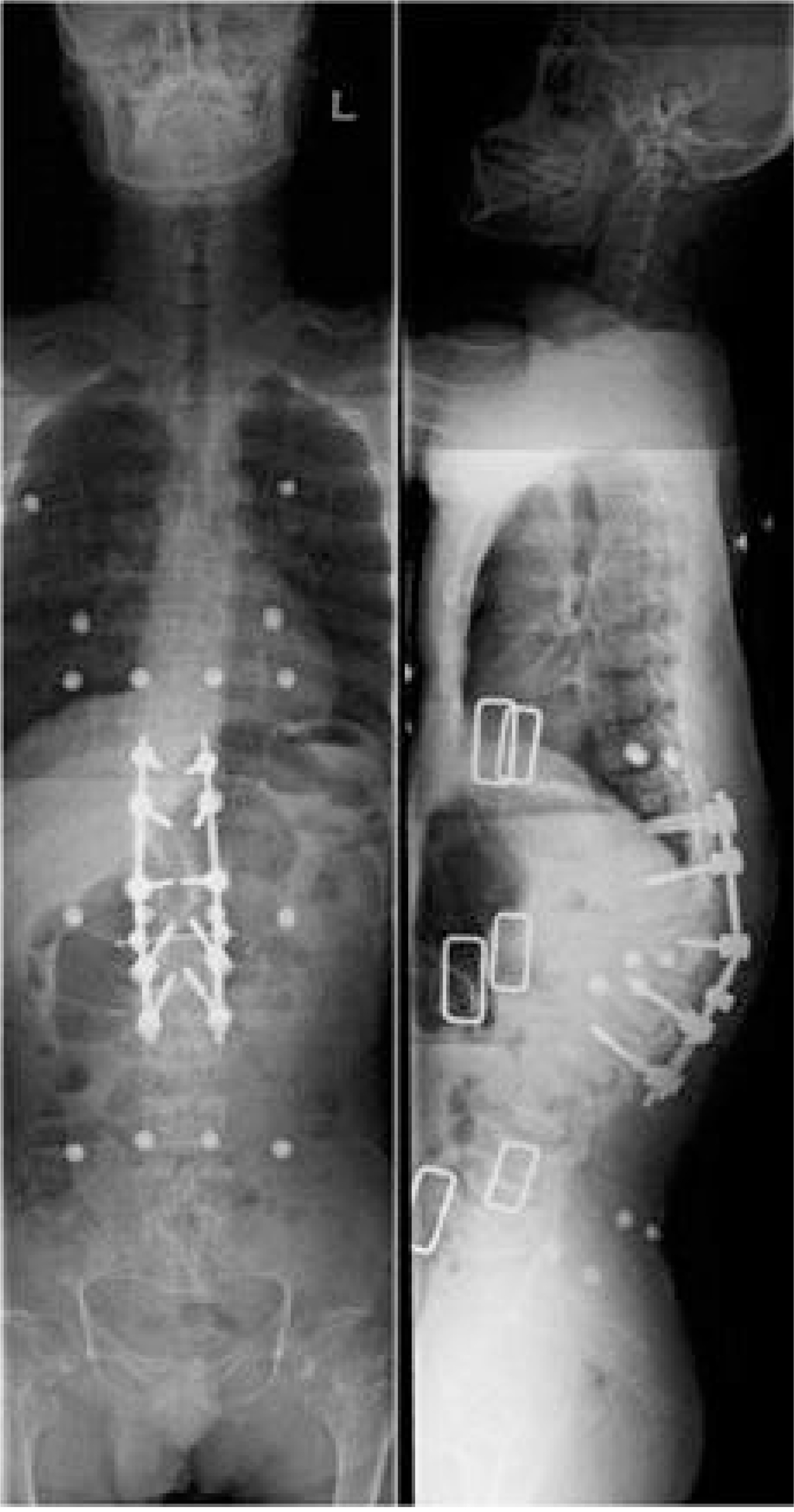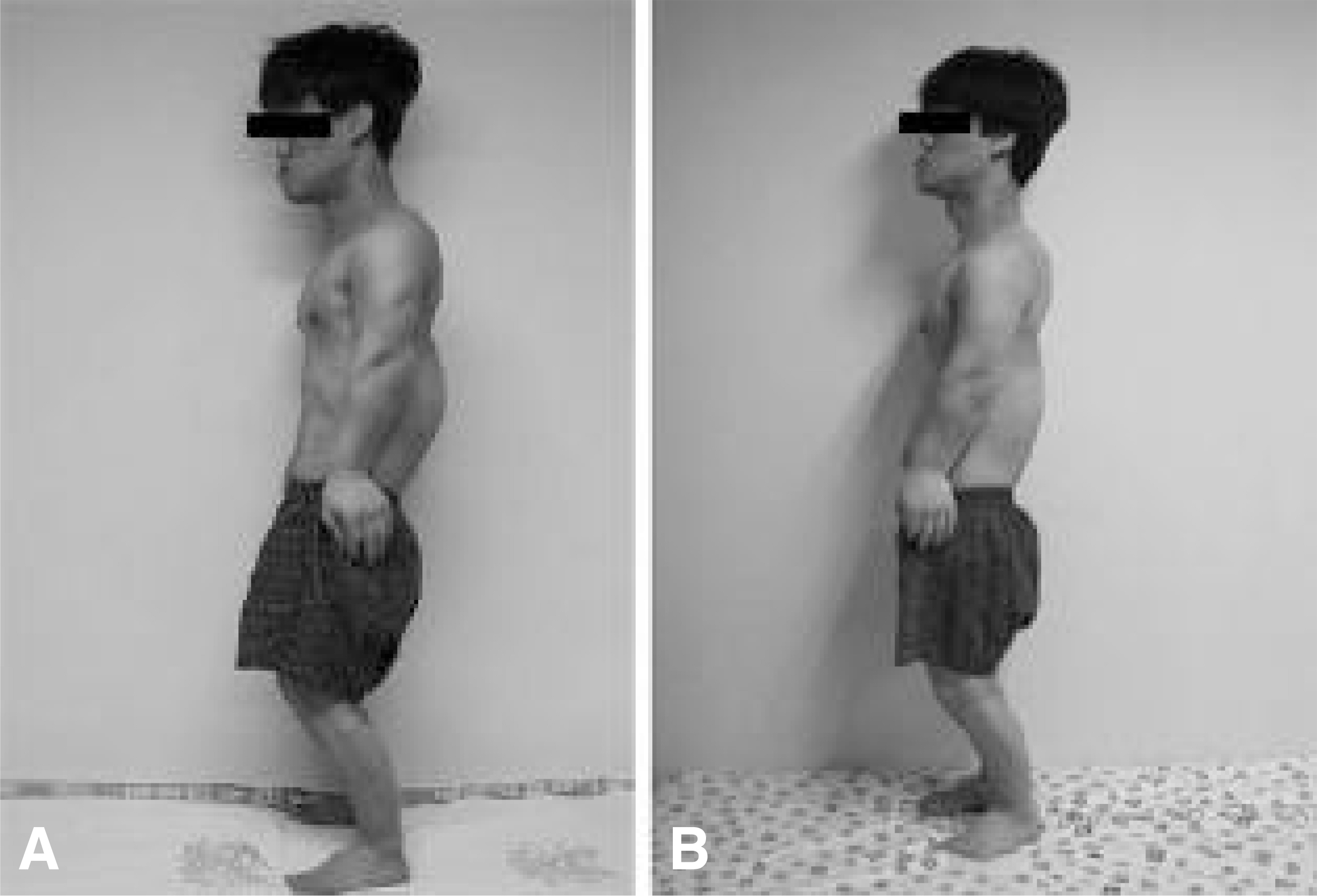J Korean Soc Spine Surg.
2005 Dec;12(4):375-379.
Thoracic Myelopathy due to Thoracolumbar Kyphosis and Spinal Stenosis in Achondroplasia: A Case Report
- Affiliations
-
- 1Department of Orthopaedic Surgery, Ulsan University Hospital, University of Ulsan College of Medicine, Ulsan, Korea. amhangpark@yahoo.co.kr
Abstract
- Achondroplasia is abnormal intracartilagenous ossification that's caused by a genetic point mutation. Thoracic myelopathy in achondroplasia that is due to thoracolumbar kyphosis and spinal stenosis is a rare finding. There is no report available on this topic in Korea. We report here a case of achondroplasia with thoracic myelopathy due to thoracolumbar kyphosis and spinal stenosis, and we include a brief review of literature.
Figure
Reference
-
1). Fortuna A, Ferrante L, Acqui M, Santoro A, Mastronardi L. Narrowing of thoracolumbar spinal canal in achondroplasia. J Neurosurgical science. 233:185–196. 1989.2). Kahanovitz N, Rimoin DL, Sillence DO. The clinical spectrum of lumbar spine disease in achondroplasia. Spine. 7:137–140. 1982.
Article3). Kopits SE. Thoracolumbar kyphosis and lumbosacral hyperlordosis in achondroplastic children. Basic Life Sci. 48:241–255. 1988.
Article4). Pauli RM, Breed A, Horton VK, et al. Prevention of fixed, angular kyphosis in achondroplasia. J Pediatr Orthop. 17:726–733. 1997.
Article5). Sanjay NM, Howard WM. Thoracolumbar Spinal deformity in Achondroplasia. Neurosurg Focus. 14(1):1–8. 2003.6). Shikata J, Yamamuro T, Iida H, et al. Surgical treat - ment of achondroplastic dwarfs with paraplegia. Surg Neurol. 29:125–130. 1988.7). Thomeer RT, van Dijk JM. Surgical treatment of lumbar stenosis in achondroplasia. J Neurosurg. 96(Spine 3):292–297. 2002.
Article8). Tolo VT. Spinal deformity in short-stature syndromes. Instr Course Lect. 39:399–405. 1990.
- Full Text Links
- Actions
-
Cited
- CITED
-
- Close
- Share
- Similar articles
-
- Surgical Treatment of Spinal Stenosis Secondary to Achondroplasia
- Aneurysmal Subarachnoid Hemorrhage Associated with Achondroplasia: Case Report
- A Case of Thoracic Spinal Canal Stenosis
- Thoracic Disc Herniation of the Adjacent Segment With Acutely Progressing Myelopathy
- Traumatic Cauda Equina Syndrome Due to Spinal Stenosis in an Achondroplastic Patient: A Case Report






